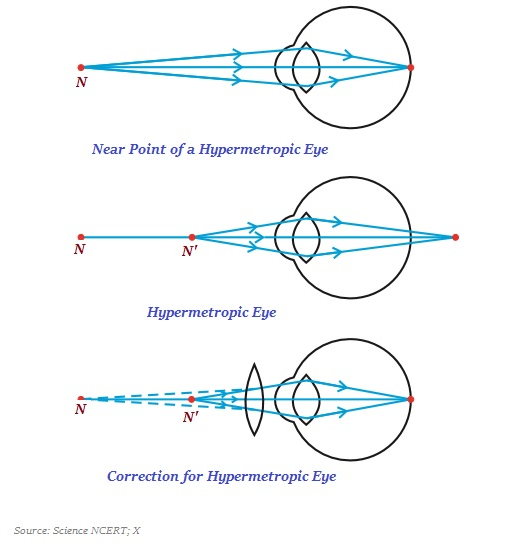
- Physics - Home
- Physics - Force and Pressure
- Physics - Friction
- Physics - Some Natural Phenomena
- Physics - Motion
- Physics - Force and Laws of Motion
- Physics - Gravitation
- Physics - Mass and Weight
- Physics - Work and Energy
- Physics - Light
- Physics - Reflection and Refraction
- Images Formed by Spherical Mirrors
- Physics - Refraction of Light
- Physics - Spherical Lenses
- The Human Eye & Colorful World
- Refraction of Light Through a Prism
- Physics - Electricity
- Chemical Effects of Electric Current
- Magnetic Effects of Electric Current
- Physics - Electric Motor
- Physics - Source of Energy
- Physics - Sound Part I
- Physics - Sound Part II
- Speed of Sound in Different Media
- Physics - The Solar System
- Physics - Stars and The Solar System
The Human Eye and The Colorful World
Introduction
The human eye is one of the most valuable and sensitive sense organs. It empowers us to see the wonderful and colorful things around us.
Human Eye
The human eye is very much similar to a camera.
The lens system of an eye forms an image on a light-sensitive screen known as the retina (see the image given below).
Light enters the eye through a thin membrane known as the cornea.

With a diameter of about 2.3 cm, the eyeball is almost spherical in shape.
Behind the cornea, there is a structure, known as iris (see the image given above).
Iris is a dark muscular diaphragm; it has major function to control the size of the pupil.
The pupil has major function to control and regulate the amount of light entering the eye.
The lens of eye forms an inverted real image of an object on the retina.
Power of Accommodation
The eye lens, which is composed of a fibrous, jelly-like material, has an important role; further, the change in the curvature of the eye lens also change the focal length.
When the muscles are in relax state, the lens shrinks and becomes thin; therefore, its focal length increases in this position and enables us to see the distant objects clearly.
On the other hand, when you look at an object closer to your eye, the ciliary muscles contract; resultantly, the curvature of the eye lens increases and the eye lens becomes thicker. In such a condition, the focal length of the eye lens decreases, which enables us to see nearby objects clearly.
Such ability of the eye lens to adjust its focal length is known as accommodation.
Furthermore, the focal length of the eye lens cannot be decreased below a certain (minimum) limit. This is the reason that we cannot read the book kept very close to our eyes rather we have to maintain a certain distance.
To see an object comfortably and clearly, the object must be kept at the distance of (about) 25 cm from the eyes.
However, there is no limit of the farthest point; a human eye can see objects of infinity, e.g. moon, stars, etc.
Defects of Vision and Their Correction
When the crystalline lens of an eye (normally at old age), becomes milky and cloudy, it is known as cataract.
Cataract causes partial or complete loss of vision; however, it can be treated through a cataract surgery.
-
Following are the three common refractive defects of vision −
Myopia or near-sightedness
Hypermetropia or farsightedness, and
Presbyopia
Lets discuss each them in brief:
Myopia
Myopia is also known as near-sightedness.
A person suffering from myopia can see nearby objects clearly, but cannot see distant objects clearly.

As shown in the image given above, in a myopic eye, the image of a distant object is formed in front of the retina instead of at the retina.
-
Myopia may arise because of −
Excessive curvature of the eye lens, or
Elongation of the eyeball.
This defect can be corrected by using a concave lens of suitable power.
As shown in the image given above, using of concave lens of suitable power, brings the image back on to the retina; likewise, the defect is corrected.
Hypermetropia
Hypermetropia is also known as far-sightedness.
A person suffering from hypermetropia can see the distant objects clearly, but cannot see the nearby objects clearly.
In such a case, as shown in the image given below, the near point, is farther away from the normal near point (i.e. 25 cm).

Hypermetropia may arise because of
The focal length of the eye lens when it is too long, or
The eyeball has become too small.
Hypermetropia can be corrected by using a convex lens of appropriate power.
As shown in the image given above, eye-glasses with converging lenses provide the additional focusing power that helps in forming the image on the retina.
Presbyopia
Presbyopia, an eye problem, arises because of the gradual weakening of the ciliary muscles and diminishing flexibility of the eye lens.
Some people suffer from both myopia and hypermetropia; such kind of eye defect is treated by using bifocal lenses.
A common type of bi-focal lenses consists of both the concave and the convex lenses.